"Alexander Adams: Art in Destruction"
An exhibition in Stroud, England includes new paintings of defaced figures and ruins.
Last weekend was the opening of “Alexander Adams: Art in Destruction”, at Aleph Contemporary, Stroud. This solo exhibition consists of 22 works (19 oil paintings, 2 drawings and 1 gouache painting). Six of the oil paintings are new, painted specifically for the display. Older works were retrieved from the archive, shown for the first time in years.
The selection of works was centred on the themes of defaced figures and ruined (defaced) buildings. The subject of the destroyed building appealed to me when I was a student, finishing my fine art degree at Goldsmiths College, London in 1995. I was intrigued about describing material literally that necessarily involved a degree of abstraction. As art students, we talked a lot about the division between figuration and abstraction, so it was a live issue at the time. Later, I made some paintings of wasteland pictures, which were of battlefields, where I played with the self-absorbed activity of abstract painting, all the time working in an emotive landscape view.
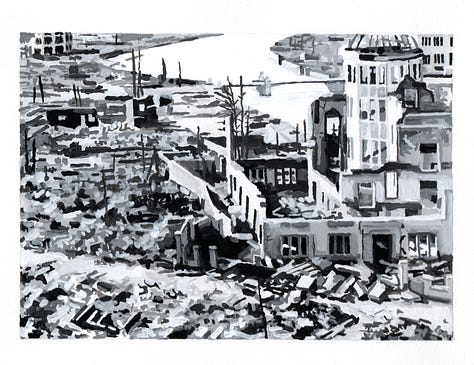

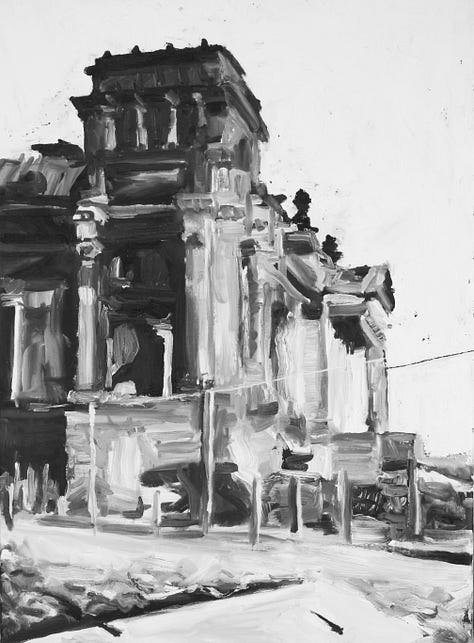
New paintings included two defaced figures. These were of men from the 1940s and 1950s. It was a period I read a lot about (biographies, history), as well as reading poetry and fiction from that time. I selected images I found powerful and painted them (with adaptations) before defacing the figures. The defacements sometimes take on the character of erasures, explosions, splashes and the like. Some even have comic undertones, like the result of a thrown cream pie. The results are partly out of my control, as they are due to the consistency of the paint, the dryness of the adjacent areas and the random qualities of fluid mechanics. They are uncorrectable and unrepeatable.
In some cases the defacements are akin to flowers that are delicate, multi-layered and rounded. That is how the painting below left turned out. The nude on the right is not defaced, but her face is hidden. There is a great melancholy about lost beauty combined with vulnerability. That is why the vintage photograph I used as a source appealed to me.
It was intriguing to see the old and new work side-by-side. Also, most of these paintings had never been exhibited, so seeing them on the gallery walls was the first time I had ever seen these in that way. When one works in the studio, viewing conditions are far from ideal. Placing unrelated pieces next to each other can spark new associations, such as compressed dynamism of the defacement and the equivalent to explosion due to war. This exhibition is a chance for visitors to decide what they think the links are and which are the most effective works - those that excite or move them most.
“Alexander Adams: Art in Destruction”, Aleph Contemporary, Stroud, until 25 June 2024, view the exhibition on Aleph Contemporary website here.

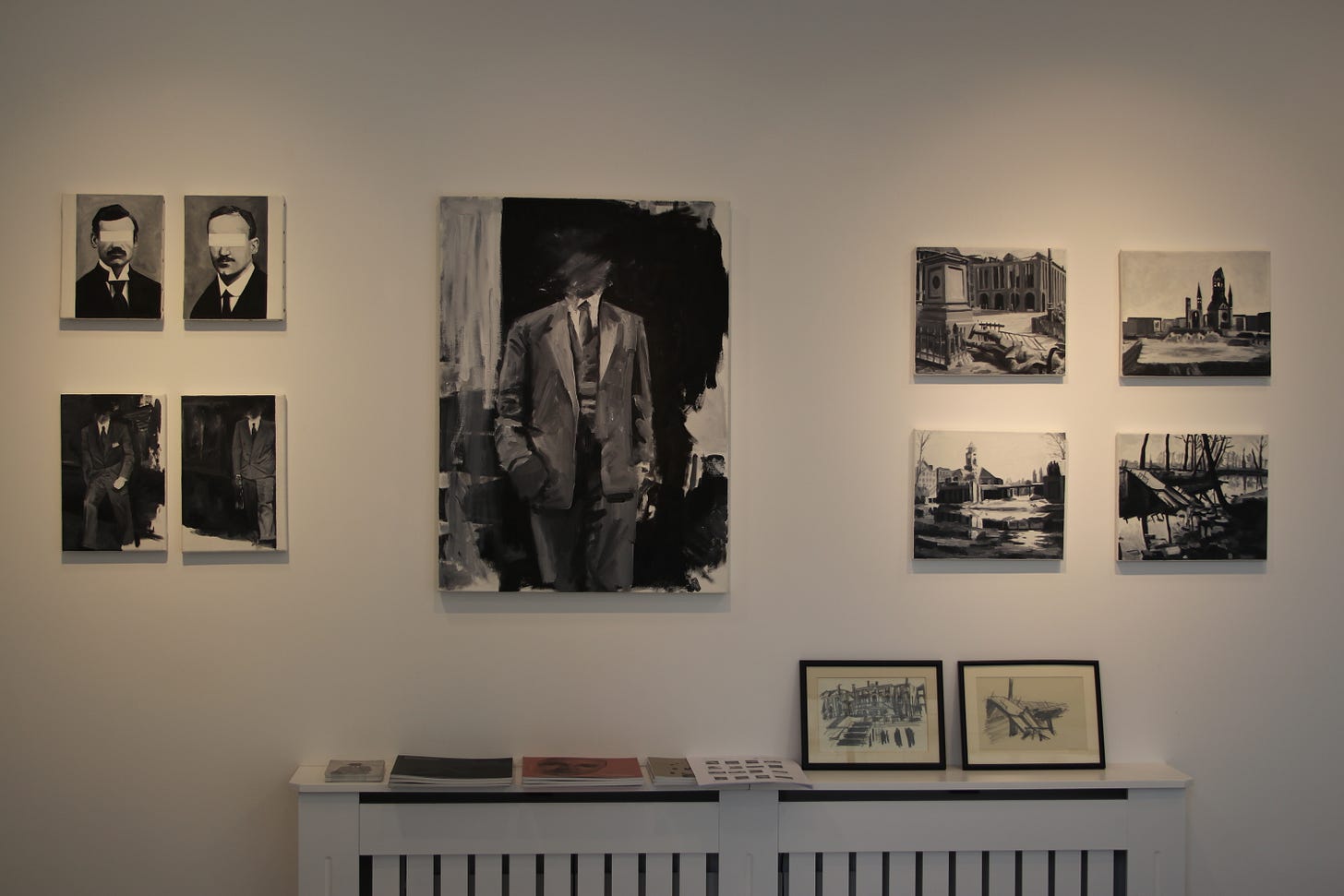
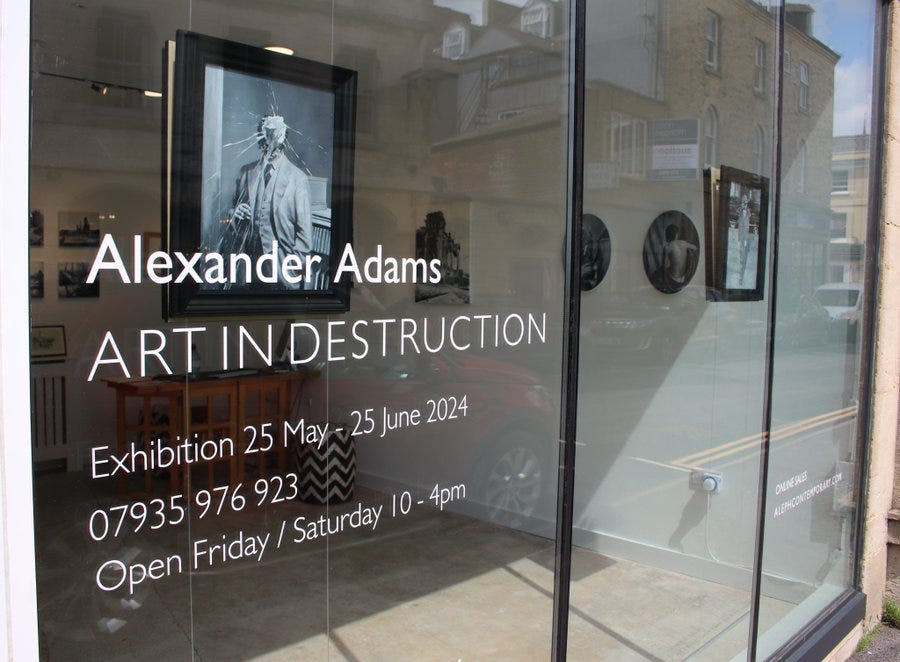
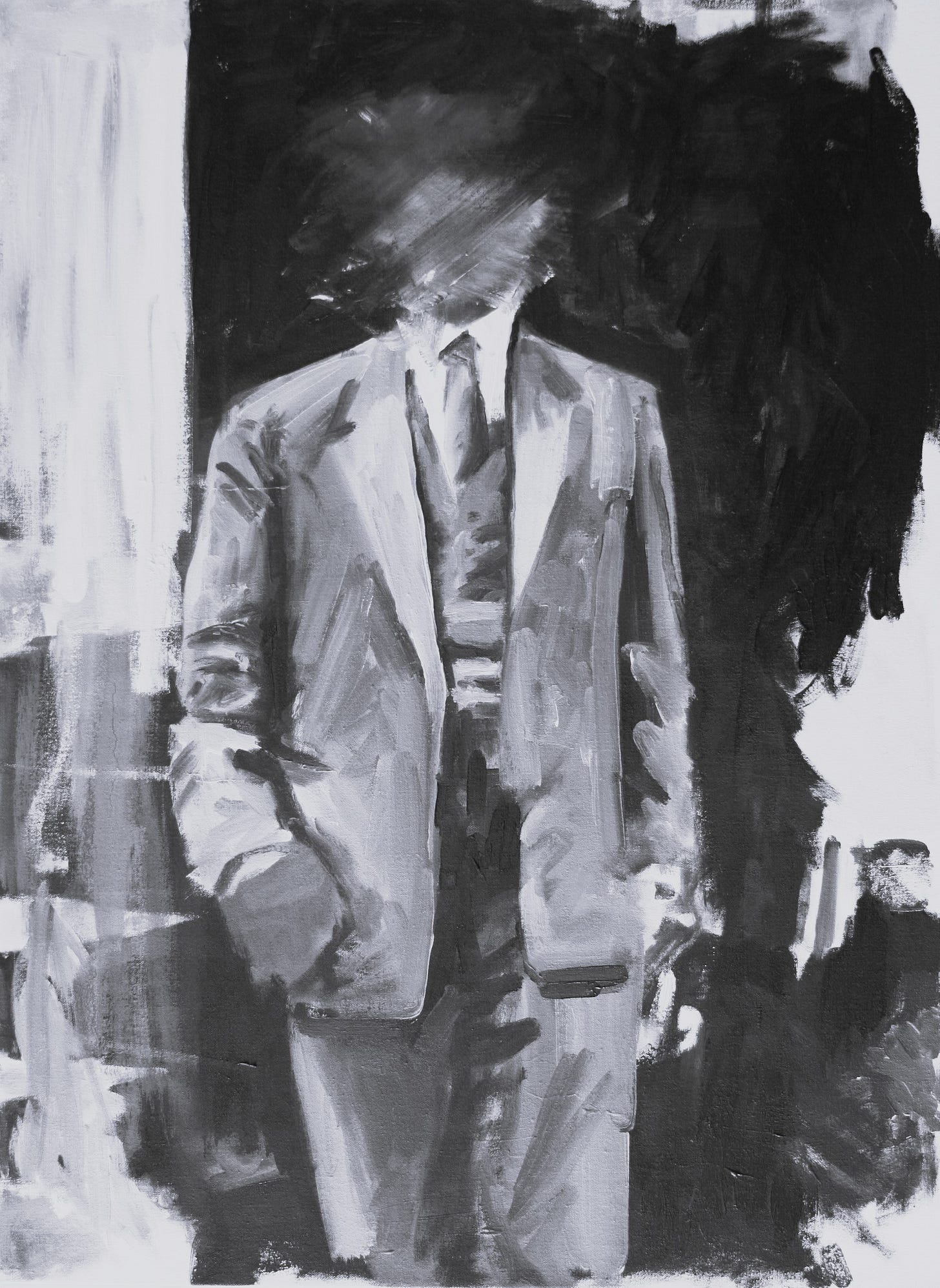
Wonderful to see that you are exhibiting your own work. Thanks so much for sharing it with us. The image of the defaced man was very powerful. What is left of us in the end, other than the memories others have of us or the legacy of any children we might have? The Belfast of my childhood had many damaged buildings - the collateral damage of the Troubles. Often it was felt there was no point rebuilding (as the edifice would just get damaged again), so these zombie buildings just stayed standing until the regeneration that came post the Peace Agreement. It was disturbing to see them finally cleared away or, if more fortunate, restored. The past can be a familiar, comforting place, for all its horrors.
Beautiful work, thank you for v sharing it, along with your inspiration.